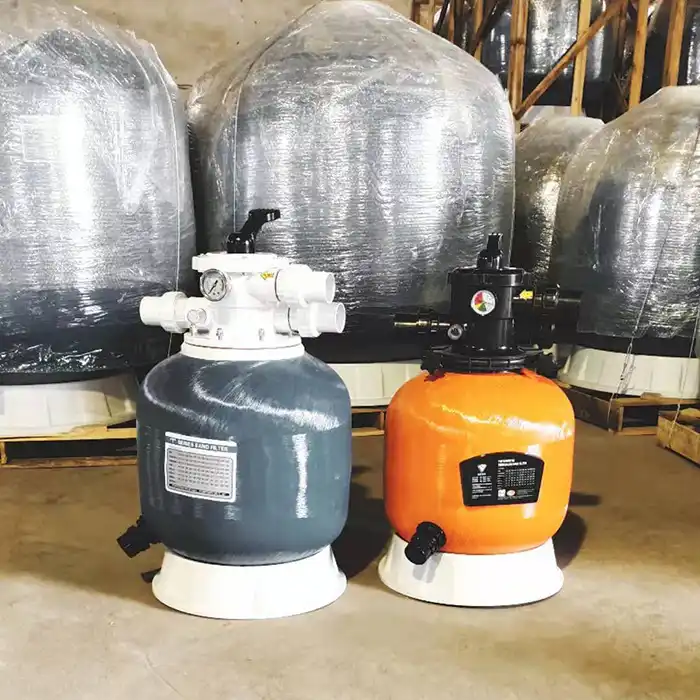Quartz sand filter and activated carbon filter are commonly used water treatment devices that play a significant role in removing impurities from water and improving water quality. However, many people are confused about the difference between the two. What distinguishes the quartz sand filter from the activated carbon filter? This article will delve into their working principles, applicable scenarios, and effects to help readers better understand how to choose the right filter to meet various water treatment needs.

Reflection of the difference between the two filter materials
Ⅰ、Different filling materials
- The quartz sand filter is filled with quartz sand.
- The activated carbon filter is filled with activated carbon filter material.
Ⅱ、Different adsorption principles
Adsorption principle of the quartz sand filter:
The adsorption principle of the quartz sand filter lies in its filling of quartz sand, a material with high hardness and toughness. Through dense filling, quartz sand creates fine particle gaps, blocking and retaining large solid impurities in the water, such as suspended solids, through physical effects. However, since its adsorption mechanism mainly targets large particles, it has relatively little effect on tiny particles and dissolved organic matter in water.
Adsorption principle of the activated carbon filter:
The unique feature of the activated carbon filter is the activated carbon filled inside, which has a rich microporous structure. Its microporous structure imparts super adsorption capacity, especially suitable for capturing fine particles and dissolved impurities in water. Through chemical adsorption, activated carbon can efficiently adsorb tiny particles such as organic matter, colloids, and ions. Therefore, activated carbon filters have a significant effect on improving the microscopic purification of water quality.
Ⅲ、The effects of the two are different
Effect of quartz sand filter
Due to its high hardness and solidity, quartz sand is not easily broken during operation or backwashing. During the forward washing process, the broken quartz sand will be discharged along with the backwash water, causing the filter to lose a large amount of filler in a short period. Since its primary function is to intercept solid particles insoluble in water, quartz sand filters are suitable for handling such impurities.
Effect of activated carbon filter
After backwashing for several hours, the water discharged from the activated carbon filter is dark, indicating that it has absorbed a large amount of organic matter, colloids, ions, and other impurities. The main advantage of the activated carbon filter is its microporous structure, which has strong adsorption capacity and is especially suitable for removing tiny particles such as organic matter in water.
Ⅳ、The difference between filter material cleaning and after cleaning
The adsorption capacity of quartz sand and activated carbon filters after cleaning shows obvious differences. After cleaning the quartz sand filter, its adsorption capacity is relatively weak due to the high hardness and solidity of the quartz sand. Breakage may occur during the cleaning process, causing the quartz sand particles to be discharged, reducing the effective filling volume of the filter, making it more suitable for rough filtration of large particles.
In contrast, activated carbon filters can maintain the integrity of their microporous structure after cleaning and show strong adsorption capacity. Its microporous structure helps to effectively absorb tiny particles and dissolved organic matter, making it suitable for microscopic purification scenarios that have higher requirements for water quality.
In general, quartz sand filters and activated carbon filters each have their own unique advantages and applicable scenarios in water treatment. Choosing the right filter depends on water quality characteristics, specific needs, and application scenarios. Through the introduction of this article, we will have a clearer understanding of quartz sand filters and activated carbon filters and can choose and apply them more wisely in daily life to ensure cleaner and healthier water quality.
